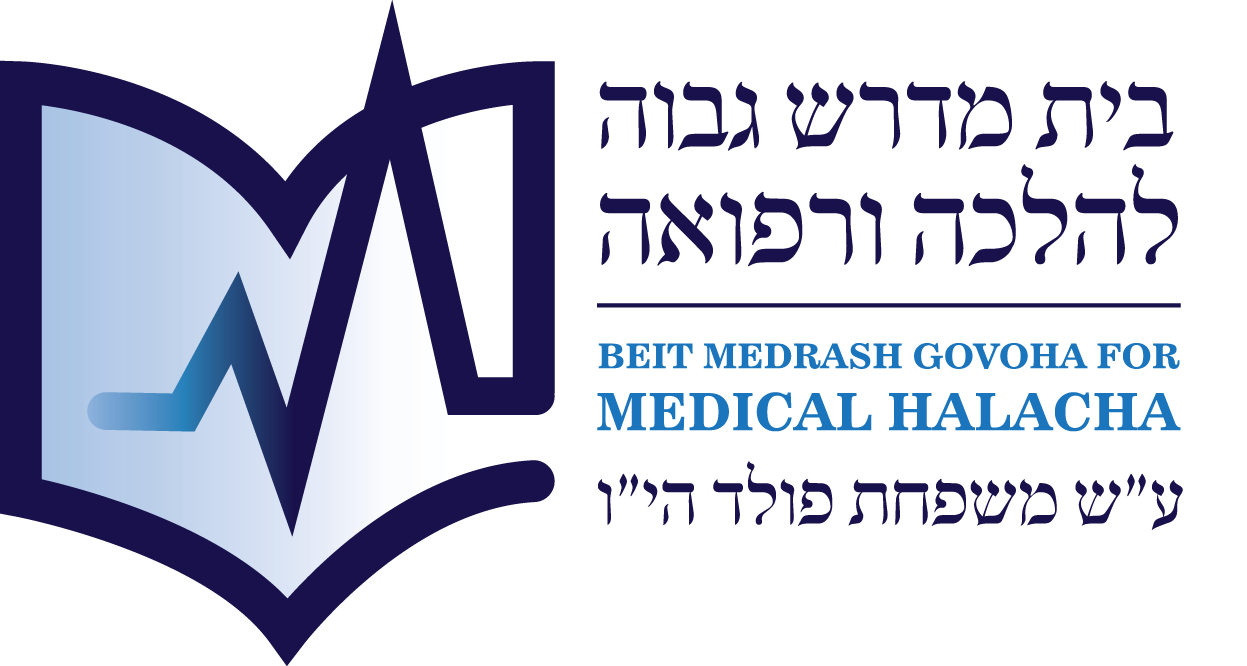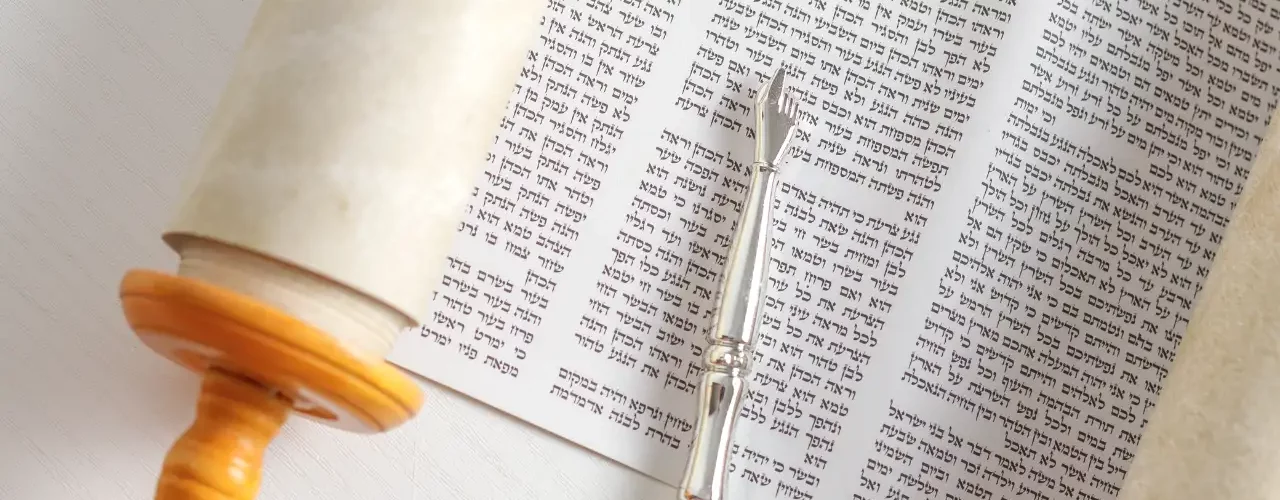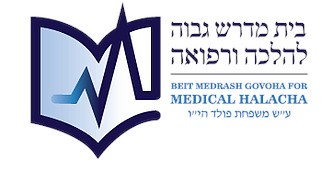Both Sukkos and Simchas Torah are associated with series of seven that culminate with Dovid haMelech.[1] On Shavuos, we read Megilas Rus that recounts the events leading to the birth of Dovid haMelech. The roots of this story occurred thousands of years earlier and are alluded to by a Posuk in Parshas Bereishis.
After Kayin killed his brother Hevel, and Kayin would have no enduring offspring, Adam returned to his wife, Chava. She conceived again and gave birth to Shais, declaring, “For Hashem has granted me (“Shas Li”) another seed” – in place of Hevel (Bereishis 4:25).
Chaza”l interpret this as a moment of great prophetic insight: “‘Another seed’ – a seed that comes from another place. And which is that? This is the Melech haMashiach!” (Rus Rabba [Vilna edition], 8:1).
Dovid haMelech, who would be born many generations later, emerged not only from noble lineage, from the tribe of Yehuda, but also “from another place” – from Rus, a Moabite convert. Chava is awestruck by the hidden and wondrous designs of Hashem, whose depths we cannot fathom, as the Pasuk states: “The hidden things belong to Hashem our God, but the revealed things are for us and our children forever.” (Devarim 29:28)
Over the past several decades, the world of fertility and reproduction has undergone dramatic transformation. Thanks to groundbreaking medical advances, millions of couples who had no hope of conceiving can now build families. While these developments raise significant Halachic questions, one cannot help but marvel at the manifestation of Hashem’s blessing, granting Zera haBa miMakom Acher, children brought into existence through means once thought unimaginable.
We cannot comprehend the designs of Heaven. Perhaps this is a fulfillment of the words of Chazal: “The son of David will not come until all the souls have been exhausted” (Yevamos 62a), i.e., until all the babies have been born. Perhaps it is for this very purpose that Hashem opened such a wealth of new possibilities, to remove all obstacles and expedite the coming of Mashiach ben Dovid, who himself is a “Zera haBa miMakom Acher.”
The Mefarshim discuss why Adam returned to his wife after separating from her for 130 years. The Panim Yafos[2] offers two possible explanations:
- To fulfill the Mitzva of P’ru uR’vu: Hevel had been murdered without children, and Kayin’s offspring were destined to perish. Only Noach and his sons, descendants of Shais, survived the Mabul.
- To fulfill Hashem’s command: “u’Milu Es ha’Aretz” (“Fill the earth”, Bereishis 1:28).
The assumption that the death of Hevel and the eventual loss of Kayin’s lineage reinstated Adam’s obligation of P’ru uR’vu hinges on a Machlokes Amoraim in Yevamos (62a):
If a person had children and they died, R’ Huna said: he has fulfilled the Mitzva of P’ru uR’vu. R’ Yochanan said: he has not fulfilled it. R’ Huna said he has fulfilled it, based on Rav Assi, who said: “Ben David will not come until all the souls have been exhausted,” as it says, “Ki Ruach miL’fanai Ya’atof…” (Yeshaya 57:16). But R’ Yochanan said he has not fulfilled the Mitzva of P’ru uR’vu, because we need “to settle the world” (ibid. 45:18), and that is no longer the case [if the children have died].
The Halacha follows R’ Yochanan (Shulchan Aruch, E.H. 1): One who had children who died has not fulfilled the Mitzva of P’ru uR’vu. Accordingly, one might interpret Adam’s return to Chava and the birth of Shais as an effort to fulfill the Mitzva.
However, the Panim Yafos dismisses this explanation. We know that the sister of Tuval Kayin was Na’ama (Bereishis 4:22), identified by Rashi (citing the Midrash) as Noach’s wife. From this, he proves that the decree to eradicate Kayin’s descendants after seven generations applied only to male offspring, not females. Consequently, numerous descendants were born from the union of Noach and Na’amah, and Adam’s Mitzva of P’ru uR’vu was fulfilled through them, as the Gemara explains.[3]
Therefore, concludes the Panim Yafos, Adam’s motivation was not the Mitzva of P’ru uR’vu, but the personal obligation that Hashem placed upon him to fill the earth with descendants. Since Kayin’s lineage was doomed and Hevel had just been slain, Adam returned to his wife to bring forth Shais.
There is an intriguing discussion in the Yam shel Shlomo[4] (Yevamos 1:10) who proves from the Pasuk above that a fetus is not considered a person’s “Zera” until after birth. This is based on Chava’s statement only after the birth of Shais: “Hashem has given me another seed” – implying that it was only when the child was born that she had new Zera.
However, the title “Ben” applies already from the moment of conception, as evident from the Pasuk describing Rivka’s pregnancy with Esav and Yaakov in Parshas Toldos (25:22): “And the children (“haBanim”) struggled inside her” – even in the womb, they were referred to as Banim.
The Pardes Yosef[5] disagrees, based on the Gemara in Sanhedrin (110b):
It was stated: When does a child merit a share in the World to Come? R’ Chiya and R’ Shimon bar Rebbi disagree. One says from birth; the other says from when he speaks. The one who says from birth cites the Posuk: “They will come and declare His righteousness to a people born, that He has done [this]” )Tehillim 22:32). The other cites the Posuk: “A seed will serve Him; it will be told of Hashem to the coming generation” (ibid 31).
Ravina says: from the moment of conception, as it says: “A seed will serve Him.” R’ Nachman bar Yitzchak says: from circumcision, as it says: “I am afflicted and near death from youth…” A Tana taught in the name of R’ Meir: from when the child says Amen, as it states: “Open the gates and let the righteous nation enter, the one who keeps faiths” (ibid. 88:16) – do not read Shomer Emunim (who keeps faiths), but she’Omer Amen (who says Amen).
We see that a fetus is considered Zera even before birth.
As Rashi explains:
From the moment the seed takes root in the woman’s uterus – even if she miscarries and the fetus dissolves – it still has a portion in the World to Come, as it says: “A seed will serve Him.” And so is taught in the last chapter of Kesubos (111a): “Your dead shall rise” – to include even miscarried fetuses.
Another question to consider is when the designation of “father” and “mother” begins. This has become particularly pertinent in the setting of gestational carriers in recent years. Does a child born through such means consider the gestational carrier its mother, or is maternity assigned to the genetic mother whose egg was used? Part of the debate centers on whether motherhood is determined at the point of conception or at the moment of birth (or, perhaps, by in whose uterus gestation occurred).
Aside from that specific debate, a broader question arises: when does parenthood begin?
In other words, it may be that maternity must be linked to a specific event – even when a woman is unquestionably the biological and genetic mother, she might still not be considered the Halachic “mother” until a particular moment. Similarly, even though the father is unquestionably the biological progenitor, his designation as “father” may not begin until birth.
In this light, consider the words of the Gemara on the Pasuk in Megilas Esther (2:7): “And when her father and mother died, Mordechai took her as a daughter.” The Gemara (Megila 13a) elaborates:
“For she had neither father nor mother.” Why is it also necessary to say, “when her father and mother died”? Rav Acha said: Her father died when her mother became pregnant; her mother died in childbirth.
Rashi explains:
To teach us that she did not have a father or mother even for a single day: at the moment her mother conceived, her father died – so she never had a father from the time when one could be called a father; and when her mother gave birth, she died – so she was never fit to be called a mother.
The Kli Chemda[6] (Parshas Toldos) notes that this clearly implies that the father’s status is conferred at conception. Therefore, since Esther’s father died at the time of conception, it is considered that she never had a father at all. However, the status of mother is only conferred at birth; therefore, the death of her mother during childbirth establishes that Esther never had a mother.
[1] The seven Ushpizin of Sukkos and the seven Hakafos of Hoshana Raba and Simchas Torah correspond to the seven lower Sefiros (Chesed, Gevura, Tiferes, etc.,), with the final Sefira – Malchus – represented by Dovid haMelech.
[2] The Hafla’a – R’ Pinchas haLevi Ish Horowitz zt”l (1731-1805)
[3] Regarding the Halachos of fulfilling Pru uR’vu through grandchildren and similar questions, see Even haEzer ibid. and the Beis Shmuel and the other Nos’ei Keilim there.
[4] The Maharsha”l, R’ Shlomo Luria zt”l (1510-1573)
[5] R’ Yosef Patznovski zt”l (1875-1942)
[6] R’ Meir Don Plotzky zt”l (1866-1928)












Add comment